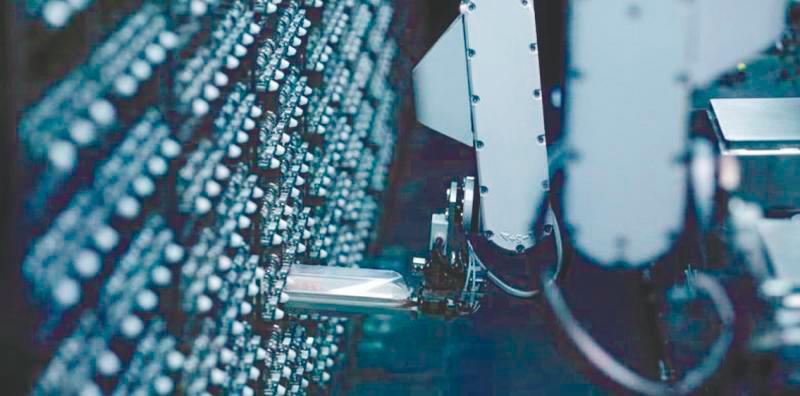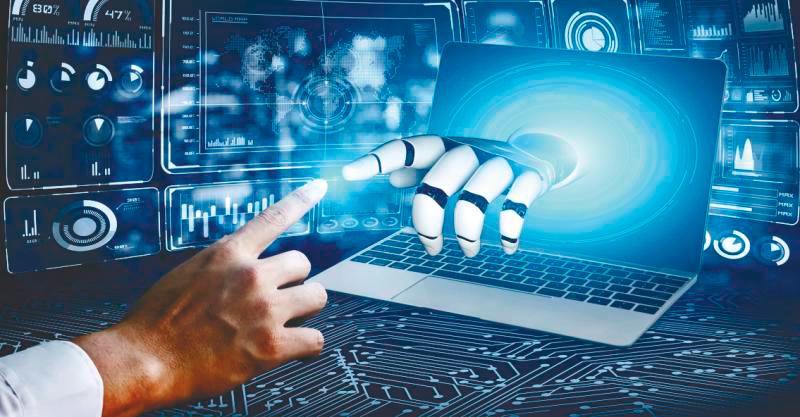NOWADAYS, artificial intelligence (AI) is almost everywhere. In fact, the fundamentals of AI and machine learning have existed since 1950, when the term Artificial Intelligence was created. The first primitive form of artificial intelligence, an automated checkers bot, was constructed in England in 1951.
AI has come a long way since then, and we’re already seeing a wide range of technologies, computers and systems implemented in a variety of ways to make people’s jobs easier and so on. So, what exactly is AI?
Artificial Intelligence is a computer program’s capability to learn and comprehend. Everything can be termed artificial intelligence if it involves a computer software performing tasks that would ordinarily require human intelligence.
There are numerous AI applications which have already proven to ease human lives, such as the development of autonomous vehicles, face recognition software, virtual assistants like Amazon’s Alexa and Apple’s Siri, and a wide range of industrial applications in fields like gaming, healthcare, and education. Even the most recent OpenAI-developed chatbot, ChatGPT, has begun to gain popularity.
Well, what are the positives and drawbacks of this potent technology, given the tremendous growth in AI’s use in our daily lives and the ongoing improvement of its algorithms? Is it a good force, a destructive force, or somewhere in between?

PROS OF AI
Fewer errors
Humans are prone to making mistakes when performing tasks. This may be due to differences in cognitive abilities between individuals. Human beings have limitations; after several hours of work, we can become exhausted and lethargic. To solve these issues and to be more productive, humans programme machines to do a specific task.
Therefore, the accuracy depends on how well they build and programme the computers to do the job. By using a specific set of algorithms, artificial intelligence makes decisions based on previously obtained data.
As a result, errors are reduced, and the possibility of achieving higher accuracy with greater precision exists. Therefore, phrases such as “we are not robots” exist, as nothing beats technology’s accuracy and persistence in performance.
Available 24/7
An average worker can only work for eight hours daily, and there is even a law governing human working hours. Humans are designed to take breaks to rejuvenate themselves and prepare for a new day of work, as well as to maintain a work-life and personal life balance.
Meanwhile, AI provides services to corporations around the clock. An AI programme can not only run continuously, but also consistently. It will always perform the same job to the same standard. This makes them a considerably better employee than a human for repetitive duties. It results in fewer errors, less downtime, and more reliability.
Speaking of availability around the clock, AI does not experience a “‘nature call” or require caffeine to get through the morning. As long as the power is turned on, algorithms can run 24 hours a day, seven days a week without needing a break.
Risky situations
This is one of the biggest advantages of Artificial intelligence. AI has reached where humans cannot. The areas of research and also incidents that are prone to risks can be minimised by the utilisation of AI in those situations.
For example, whether it be going to Mars, defusing a bomb, exploring the deepest parts of oceans, or mining for coal and oil, it can be used effectively in any kind of natural or man-made disasters. If AI is aptly utilised, it can help scientists make discoveries and inventions with minimal to no risk to human life.

CONS OF AI
High cost
The cost of a large-scale project might exceed millions of dollars. As a result, AI cannot be implemented in a small-scale firm. Furthermore, in order to satisfy the demands of a rapidly changing world, hardware and software must be updated on a regular basis.
Complex codes, algorithms, software, and hardware are used to create AI-powered devices. The maintenance of these components is time-consuming and expensive. However, the cost of constructing robots utilising AI may decrease in the future due to the development of better tools that will make it easier to produce them.
Increased unemployment
This is a controversial topic in today’s society and one of the biggest drawbacks of AI is this. AI will replace low-skilled jobs while creating jobs for people with technical skills. AI-powered machines are being used in a variety of industries, including manufacturing. As AI-based machines can operate around the clock, industries would rather invest in Artificial Intelligence than hire humans.
Lack of creativity
Machines will never be as creative as humans. Artificial intelligence can provide features for learning from data, but it cannot replicate the identical human brain and talents. The level of analytics utilised by the creator determines the accuracy of the findings from an AI-powered machine. Nothing can be invented by artificial intelligence. It can only accomplish the task for which it was programmed and learn from experience.
Ethical dilemmas
AI is all about logic. It makes decisions based on parameters that have already been set. This doesn’t leave much room for nuance and emotion. In many cases, this is a good thing, because the fixed rules are a big part of how it can analyse and predict so much data.
On the other hand, this makes it very hard to add things like ethics and morality to the algorithm. The algorithm’s results are only as good as the parameters that its creators set. This means that the AI could be biassed.
As a result, they can become extremely advanced yet cannot act or think like humans. Machines are thought to be intelligent, yet they lack judgmental power because they are unaware of ethics, morals, right and wrong. Hence, artificial intelligence will never be able to replicate human traits such as emotion and decision-making ability.









